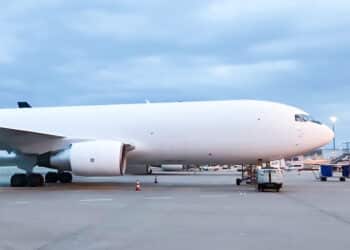ATSG, the evolution continues

The story behind these big increases in income is interesting, and reflects the evolution of what was once Airborne Express, a US competitor to FedEx and UPS, into what we now know as Air Transport Services Group.
When DHL bought Airborne in 2003, the company’s air arm was spun out as a standalone US-owned airline called ABX Air. ABX provided most of DHL’s US domestic express lift, and DHL was effectively ABX’s only customer. As is well known, DHL’s adventure in the US domestic express arena was a disaster, and after years of staggering losses, the company pulled out in 2008, keeping only its international business.
This would have left ABX in a difficult position had the airline not seen the writing on the wall and begun to prepare for the inevitable by acquiring other airlines and air freight businesses under the umbrella of newly formed parent company Air Transport Services Group.
Today, ABX Air still operates freighters in support of DHL’s international business, but just sixteen rather than the over 100 (mostly DC-9Fs) of ten years ago. But ATSG’s real focus is on dry-leasing, through its Cargo Aircraft Management (CAM) subsidiary.
A look at the chart above shows just how far this evolution has gone. The company’s ACMI segment (which includes ACMI and CMI flying for DHL, as well as other customers, and charter operations for the US Military) still accounts for 57.2% of total revenue, whereas CAM’s leasing activities only account for 25.1%. But in terms of operating earnings, the situation is very much reversed, with CAM generating 83.0% of earnings while the ACMI segment generates just 6.5%.
ATSG also engages in other activities, principally through its MRO subsidiary AMES and the management of some hubs for the US Postal Service. The Other Activities segment generated 17.7% of second-quarter revenue, and 10.6% of earnings.
Of particular note in the quarter:
- CAM’s pre-tax earnings were up 35.4%, driven by eight additional freighters leased to external customers
- The second quarter marked the beginning of a new four-year contract with DHL. Initially for fifteen 767 freighters, it has already expanded to sixteen, and will increase to eighteen later this year when CAM will take redelivery of two 767-300BDSFs following conversion from passenger configuration by Bedek Aviation Group.
- ATSG’s freighter fleet now includes thirty-six 767-200Fs, ten 767-300Fs, five 757-200Fs, and four 757-200s in combi configuration – a total of fifty-five freighters.




